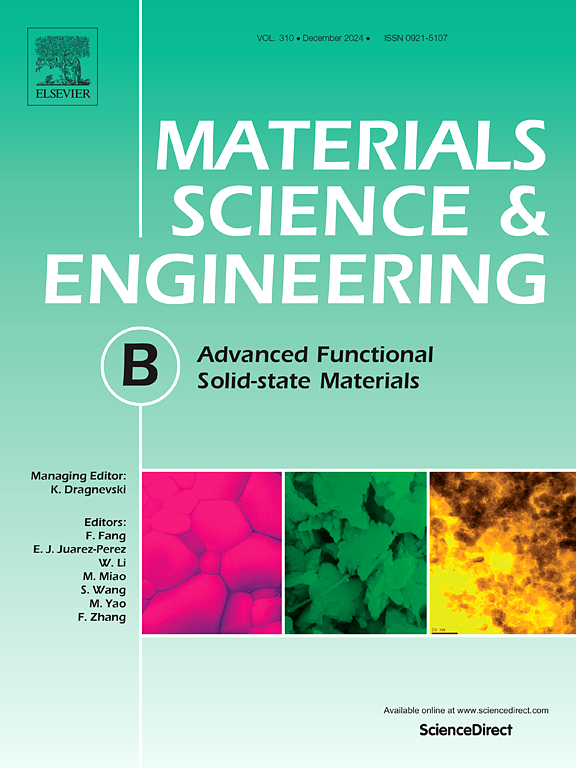Structural, microstructural and electrical characterization of Sr1-xCeO3: xNa+ (0 ≤ x ≤ 0.08): Investigating dielectric relaxation and NSPT charge transport mechanism
IF 3.9
3区 材料科学
Q2 MATERIALS SCIENCE, MULTIDISCIPLINARY
引用次数: 0
Abstract
This investigation emphasizes monovalent substitution of Na+ ions at Sr- sites of SrCeO3. Three compositions (x = 0.00, 0.04, and 0.08) of the Sr1-xCeO3: xNa+ system named NS0, NS4, and NS8 were synthesized using a solid-state reaction route. XRD and Rietveld refinement confirmed their orthorhombic structure within the Pnma space group. SEM was employed to assess the impact of dopant on the microstructure, showing grain size enlargement attributed to sodium as a sintering aid in the doped samples. XPS showed the presence of Ce4+ and Ce3+ states. The Kubelka-Munk equation was employed to measure the bandgap reduction on Na+ doping. To get insight into dielectric and electrical properties, mesurements were thoroughly analyzed in RF range with temperature range 300–600 ℃. NS8 shows higher dielectric constant and lower dissipation factor. The frequency exponent variation with temperature agrees with the NSPT model. Impedance spectroscopy revealed two relaxation phenomena associated with the grain and grain boundaries.
求助全文
约1分钟内获得全文
求助全文
来源期刊

Materials Science and Engineering: B
工程技术-材料科学:综合
CiteScore
5.60
自引率
2.80%
发文量
481
审稿时长
3.5 months
期刊介绍:
The journal provides an international medium for the publication of theoretical and experimental studies and reviews related to the electronic, electrochemical, ionic, magnetic, optical, and biosensing properties of solid state materials in bulk, thin film and particulate forms. Papers dealing with synthesis, processing, characterization, structure, physical properties and computational aspects of nano-crystalline, crystalline, amorphous and glassy forms of ceramics, semiconductors, layered insertion compounds, low-dimensional compounds and systems, fast-ion conductors, polymers and dielectrics are viewed as suitable for publication. Articles focused on nano-structured aspects of these advanced solid-state materials will also be considered suitable.
 求助内容:
求助内容: 应助结果提醒方式:
应助结果提醒方式:


